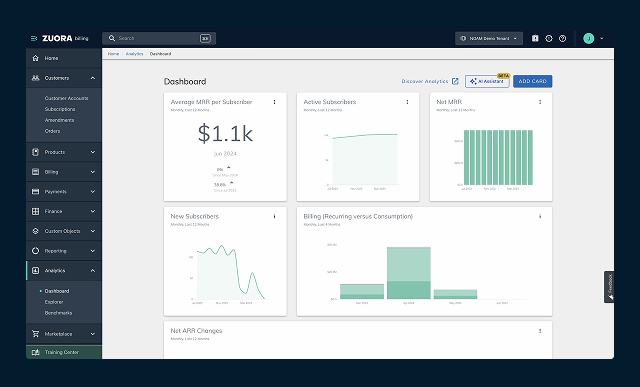For many enterprises, the cloud computing model of service-based IT represents a promised land of new opportunities, leaving behind headaches that have challenged IT teams and businesses for years.
ERP Today spoke to the engineering team at UK, USA and Australia-based SAP-centric software-enabled services provider Lemongrass Consulting to get the inside track on cloud planning, migration, operations and all aspects of innovation.
Lemongrass wanted to assess just how far the reality of post-deployment cloud migration really aligns with any organisation’s initial (often rather optimistic) expectations. In an attempt to find out, the company commissioned independent pollster firm Norstat to survey 100 senior SAP users at enterprises across EMEA.
Importantly, the respondents were split into two groups: senior IT teams both pre-and post-migration.
Interestingly, it was the inconsistencies between these groups that show the scale of the challenge. The suggested insights here could help establish a pathway for enterprises looking to maximise their investment in ERP suite (in this case SAP, but the use case very arguably translates wider) applications and cloud technologies to drive their business forward.
Pre-migration
When asked why their company has not yet shifted SAP workloads to the cloud, security and compliance, legacy applications and a lack of in-house skills were the main reasons.
Despite these perceived risks, more than half (50%) said they have a stated objective to migrate SAP workloads to the cloud within the next 12 months. These organisations believe greater agility (80%), security (78%) and reducing cost (73%) will be the major benefits.
The benefits of the cloud model are understood – it is a question of whether they are fully realised to their maximum potential leverage point post-migration.
The pandemic has been recognised for accelerating the move to cloud platforms. Organisations ran into constraints in their on-premises infrastructures, which weren’t designed to support remote working.
SAP modernisation equally became a priority with the 2027 support deadline and the need for organisations to become more data-driven, resilient and responsive to changing demand.
Knowledge, skill & experience
“As we have seen, executive buy-in for cloud migration projects is not always a given. Around one in five companies say they lack support from the C-suite. But establishing the business case is not the hard part – it’s realising the full benefits from operating SAP workloads hosted in any given cloud service. To do this successfully requires a change of approach to workflows and operational mindset as well as tech. Being confident of the technologies, your internal and external resources and your strategy is essential and at the heart of this, is proven expertise,” said Ben Lingwood, chief innovation officer at Lemongrass Consulting
Cloud technology and SAP application skills are expected to be of the highest level, as evidenced by the certification programs available through AWS, Google, Microsoft and SAP, with qualified personnel in high demand.
Almost a third (31%) of senior SAP users said they have undertaken a cloud migration project to increase their knowledge and to gain experience. However, the greater focus must be on how resources continue to develop understanding when operating SAP on cloud services.
Almost a third (31%) of senior SAP users candidly said they have undertaken a cloud migration project to make their CV/resume look better. This action alone (arguably) demonstrates the need to bring on board experienced partners who look at both the migrate and operate phases.
Return on investment
Fundamental to any cloud transformation project is the belief that it will save the organisation money. In Lemongras Consulting’s experience, the company estimates that migrating SAP systems to the cloud can help enterprises slash associated costs by as much as half.
Although migration approaches and project durations can vary, 62% of respondents indicated that their planned return on investment (ROI) was 13-24 months. In terms of actual ROI, 60% indicated it was achieved in 13-24 months. 19% aimed to get an ROI in 12 months or less, with 15% achieving their actual ROI in the same time frame.
Post migration
Almost all (93%) of the organisations surveyed said they viewed their SAP cloud migration projects as a success. Some 89% of respondents indicated they had clear objectives and specified outcomes in advance of their migration project.
Interestingly, cost reduction is further down the list of benefits, in favour of increased stability and performance.
Too frequently, simply ‘getting to the cloud’ is viewed as a good result. Organisations should look beyond the migrate phase and concentrate more effort on how they operate in the cloud model. At a practical level, this means setting up the right tools that help monitor spend and training to understand how to work with cloud platforms.
One of the other clear benefits being realised is the ability to be more responsive to business changes through more frequent SAP releases – 81% positively responded on this point.
Examples of other benefits include improved resource efficiency, improved employee & customer experience, improved regulatory compliance etc.
Post-migration experience and benefits were generally positive, but in some cases, respondents indicated that there had been some barriers. These included internal resources not being available, staff expertise, resistance to change, budget and others.
A playground for Innovation
We have seen the caution with which organisations treat their SAP migration projects. But with the right systems, processes and skills on hand, the cloud universe is nothing short of a playground for innovation.
A total of 96% of respondents confirmed that they were leveraging the ongoing benefits of cloud agility and automation.
Fortunately, what could once take years to automate in-house can now be done with the click of a button through automation. Once it is possible to do something faster, it will give IT teams the confidence to try new ideas quickly.
In the first 12 months post-migration, 36% of respondents indicated their SAP BASIS service was 41-60% automated.
Eyes on the prize
Senior SAP users are significant influencers to transformation projects at enterprises worldwide. However, they face a myriad of challenges. When it comes to security, agility and cost reduction, organisations go into projects with their eyes on the prize. However, to truly achieve these goals requires a new way of thinking – something many enterprises have yet to acknowledge.
Aligning people, processes, technology and culture to new ways of working on an enterprise-scale are fundamental to delivering higher benefits. The mindset and ways of working need to change from a project approach to continuous improvement where innovation is constant.
This study has uncovered what businesses about to embark on a cloud migration journey can learn from those that have already made the leap. What is clear is that the right people and partners are required to make it a lasting success.




